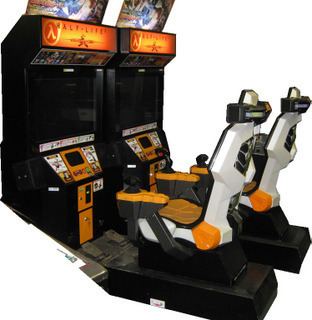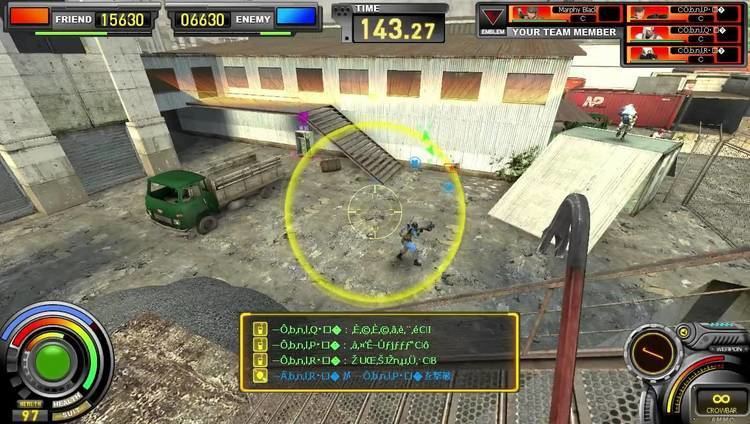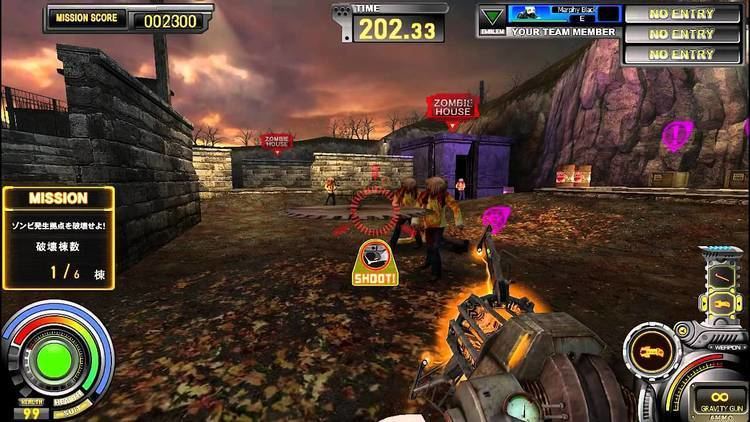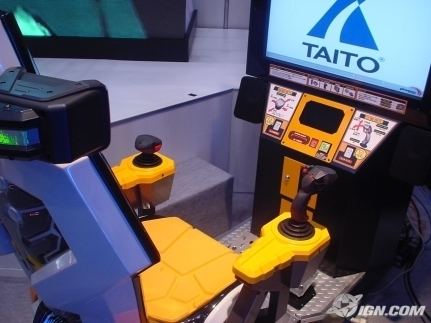10 /10 1 Votes
Engine Source Arcade system Taito Type X+ Series Half-Life Genre First-person shooter Developers Valve Corporation, Taito | 10/10 ModDB Cabinet Upright Initial release date 28 June 2006 Publisher Taito Platform Arcade game | |||||||||||||||||||||||||||||||||
 | ||||||||||||||||||||||||||||||||||
Mode(s) Single-player, multiplayer Display Raster, horizontal orientation Similar Valve Corporation games, First-person shooter games | ||||||||||||||||||||||||||||||||||
Half life 2 survivor japanese arcade version full walkthrough no commentary
Half-Life 2: Survivor is an arcade game based on the science fiction first-person shooter video game, Half-Life 2. It was released on June 28, 2006 on Taito's Type X+ arcade system, with a 32" widescreen high definition LCD. The game's player character is controlled with joysticks and floor pedals, and offers three game modes: Story, Battle, and Mission, each with different objectives. The game was met with a generally positive reception. Reviewers found it interesting to play the game in an arcade environment, and considered the shift to an arcade setting an excellent introduction of the Half-Life series of video games to Japan.
Contents
- Half life 2 survivor japanese arcade version full walkthrough no commentary
- Half life 2 survivor story part 1 route kanal japanese arcade hl2
- Gameplay
- Development
- Reception
- References

Half life 2 survivor story part 1 route kanal japanese arcade hl2
Gameplay

Players control their movement using two joysticks (one for each hand) and floor pedals. Three gameplay modes are available: Story, which approximates the events of the original game; Mission, which forces networked players to work cooperatively toward a goal; and Battle, which parallels the deathmatch content of the original game. Up to eight players—either local players or individuals in other networked arcades—can participate in the Battle and Mission modes.

In Story mode, players advance through partial combat scenes from the original game, following neon-lit guiding arrows. Each chapter has several levels with goals such as "Kill the Combine" or "Find your way to the goal". When goals are completed, the player is taken to next level. When players finish all the levels of the chapter, the game ends. Progress can be saved on a removable card to allow the player to choose a new chapter at the next visit. Aside from the G-Man introductory cut-scene, Half Life 2: Survivor does not incorporate any of Half-Life 2's story elements, levels, or physics-based puzzles.

In Mission mode, there are three objective maps with three difficulties: normal, hard, and super hard. Map goals include "Collect gems", "Destroy Zombie spawning points", and "Escape". A Battle mode is also available in the game. It is essentially four-on-four team match. Players can choose between two different factions: the Combine and the Human Resistance. Both factions have four classes of troops: Ranger, Soldier, Sniper, and Engineer.
Development
The game uses content common to the Xbox and PC releases, although the game focuses on the set pieces that characterized the original game. Half-Life 2: Survivor was first revealed to the public by Taito in a private exhibition in Tokyo on November 29, 2005. It was originally meant to be released in March 2006 but it was pushed back to June 28, 2006. The game is only available in Japan.
The game runs on a machine based on Taito's Type X unit, an arcade system built with PC components, which runs on the Windows XP Embedded operating system. The game machine's cabinet uses a 32-inch LCD screen which runs at a resolution of 1360x768 pixels. The machine also has a 5.1-channel surround sound system, and it uses a smart card for storing player data. Because the game is network-enabled, players in different arcades are able to play with each other. A maximum of eight players can play in the same match; robots are used to fill in empty player slots if there are fewer than eight human players.
Reception
Reception to the transposition of the Half-Life series to an arcade setting was generally positive. The stylistic shift from the earlier, more traditional gameplay style to the newer, multi-point arcade control scheme was a significant stylistic shift, one reviewer calling the gameplay "weird and disorienting", but still concluding it to be very enjoyable overall. The video games review website, Video Games Blogger, considered the port to an arcade setting "interesting and totally unexpected", and concluded its review by commenting that the arcade game could possibly increase interest in first-person shooter video games in Japan, a country considered to be more interested in arcade-style games.
